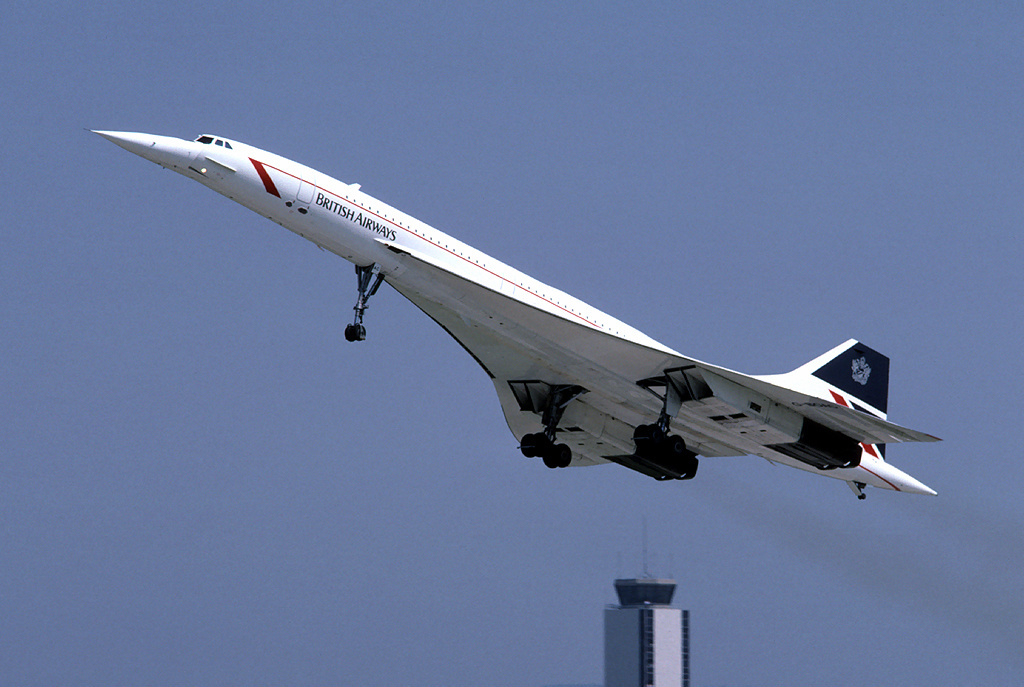Aérospatiale-BAC Concorde Supersonic Passenger Airliner
Aérospatiale-BAC Concorde is one of only two supersonic passenger airliners to have entered commercial service. The other was the Tupolev Tu-144, which although used commercially until 1983, it was never used as a commercial passenger aircraft. Concorde was jointly developed and produced by Aérospatiale and the British Aircraft Corporation (BAC) under an Anglo-French treaty. First flown in 1969, Concorde entered service in 1976 and continued commercial flights for 27 years.
Concorde measures nearly 204 ft in length and stretched between 6 to 10 inches in flight due to heating of the airframe. It was coated with a specially developed white paint to accommodate these changes and to dissipate the heat generated by supersonic flight. Concorde used the most powerful pure jet engines flying commercially. The Aircraft’s four engines took advantage of what is known as ‘reheat’ technology, which added fuel to the final stage of the engine. This produced the extra power required for take-off and the transition to supersonic flight. Concorde was subjected to 5,000 hours of testing before it was first certified for passenger flight, making it the most tested aircraft ever.
In November 1986 a British Airways Concorde flew around the world, covering 28,238 miles in 29 hours, 59 minutes. Concorde’s fastest transatlantic crossing was on 7 February 1996 when it completed the New York to London flight in 2 hours 52 minutes and 59 seconds. More than 2.5 million passengers flew supersonically on British Airways Concorde flights. On 24 October 2003, British Airways withdrew Concorde, bringing to a close the world’s only supersonic passenger service.
As a pilot I have always paid close attention to developments in the aerospace industry and had always hoped to take a flight in this supersonic aeroplane, sadly a wish never realised. However, on 7 February, 2016, it was announced by Aerospace Bristol that British Airways’ Alpha Foxtrot, also known as 216, the very last Concorde to be built and last to fly, has arrived at its new home in the new Aerospace Bristol Museum in Filton, Bristol. This is the place where it was made. The new museum, purpose-built at a cost of £19m, will open in the summer of 2017.
Since its arrival after its last flight on 26 November 2003, it had stood alongside the Filton runway, cared for continuously by Airbus UK and remaining in remarkable condition. The plane was towed over the runway and up a ramp into the new hangar. In its final position there is only a one-metre gap between the wing tips and the walls.
According to Aerospace Bristol, visitors to the new museum will be able to enter the plane, which has been restored to mint condition and will give would-be passengers an idea of what it must have been like for the elite to travel in. So, at least, I may have a opportunity see and touch this marvelous example of modern engineering.




